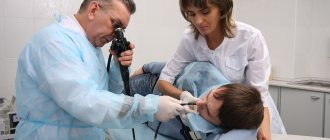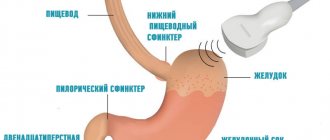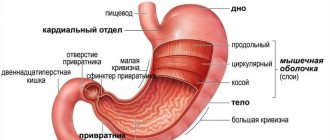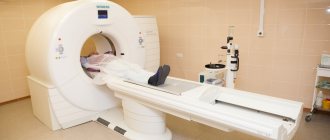general characteristics
Cascade stomach is a condition that is not an independent disease. This is a change in the structure of an organ, its deformation. Typically, this feature is discovered during diagnostic measures (FGDS, X-ray examination of the gastrointestinal tract).
The shape of the stomach can change under the influence of factors such as the nature of the diet, the volume of food, and the position of the person’s body during meals. Such conditions occur several times throughout life and do not pose a threat to the individual. Cascade bending of the stomach is a curvature in which pockets are formed in the cavity of the organ. This condition is observed quite rarely. It is diagnosed in only five percent of patients.
With this deformation, the stomach has the shape of a flat pouch. When food penetrates into the cavity of the organ, it increases in volume, becomes elongated and convex. Changes characteristic of pathology are clearly visible on x-rays. An empty stomach looks like a stocking. Once filled, it takes the shape of a horn or hook. In addition, the organ has a characteristic bend, due to which two regions are formed: upper and lower.
Diagnosis of pathology
To identify this anomaly, the doctor may prescribe fibrogastroscopy. Assessment of the acidity of gastric juice and radiography of the digestive organs have high diagnostic value.
It is the x-ray that allows you to study the structure of the stomach in detail. It is important to take into account that the usual anatomical picture may differ slightly from the image obtained as a result of this study.
Cascade stomach on x-ray
This factor can be explained quite simply. In reality, the stomach is under the influence of tone. It is also influenced by hydrodynamic factors. In addition, the structure of the digestive system can differ significantly from person to person.
What factors contribute to the development of pathology?
Cascade stomach can be a congenital or acquired deformity. The main reasons that provoke its occurrence include inflammatory processes leading to the formation of scar tissue. Experts name the following factors contributing to the development of the disease:
- Peptic ulcer disease.
- Inflammation of the stomach lining.
- Duodenitis.
- Cholecystitis.
- Inflammatory processes in the large intestine.
Sometimes the disease develops in the absence of the above circumstances. In such a case, its occurrence is explained by the following reasons:
- Compression of the stomach by a loop of intestine as a result of the formation of a large amount of gas.
- Malignant neoplasm. Cancer pathologies often lead to deformation of the organ, changes in its size and structure. With a cascade stomach, diagnosing a tumor is quite difficult.
- Emotional stress. In rare cases, stressful situations accompanied by disruptions in the gastrointestinal tract lead to deformation of the organ.
Causes of the pathological form
A cascading stomach may be a consequence of congenital or functional factors. However, sometimes this anomaly is caused by the development of various pathologies. These include the following:
- gastritis;
- colitis;
- peptic ulcer;
- duodenitis;
- cholecystitis.
If the disease could not be identified during diagnosis, then the anomaly in the structure of the stomach is classified as a functional disorder. A common cause from this group of factors is the pressure of a loop of intestine on the stomach. It may increase due to excess gas formation.
In this case, the doctor may ask the person to perform a simple action: he needs to tense up a little and bend forward 10 times. This will help eliminate cascades.
If this measure does not help, the specialist must conduct a thorough examination of the cardiac and other parts of the organ for the presence of oncological pathologies. Such violations are quite easy to miss in cascades.
In addition to these reasons, a cascading stomach can be a consequence of aerophagia. Severe stressful situations or progressive paralysis lead to changes in the shape of the organ.
In medical practice, this anomaly occurs not only in adults. Sometimes this form of stomach can be seen in a child. Most often, organ deformation is detected during radiography. The study allows you to visualize the stomach folded in half, which resembles pockets.
This type of deformity often provokes constant regurgitation and vomiting in infants. Due to the bend, food is not able to enter the pylorus, and therefore is thrown out of the stomach. This condition is most often temporary. As a rule, it lasts until the baby is six months old.
To cope with this problem, the baby should be placed on his tummy before each feeding. This simple technique helps straighten the stomach. In this situation, the deformity is considered normal and does not require treatment.
Features of pathology in young patients
This condition is diagnosed not only in adults. This deformity often occurs in children. It is detected during an X-ray examination. In such a case, the organ seems to bend in half, forming pockets. In infants, the pathology manifests itself in digestive disorders (regurgitation, bouts of vomiting). The disease goes away on its own when the baby reaches the age of six to seven months. The activity of the gastrointestinal tract is completely restored without treatment, and the child can eat normally.
Turning the baby onto his stomach before feeding helps to quickly eliminate organ deformation.
Main signs of the disease
Judging by the reviews of patients and doctors, the following symptoms are observed with cascading stomach:
- Feeling full and heavy after eating.
- Feeling nauseous.
- Attacks of vomiting.
- Loss of appetite for no apparent reason.
- Significant reduction in body weight.
With this disease, these symptoms are observed constantly or periodically. They resemble general signs of malfunctions of the digestive system, which proves the connection of the cascade stomach with other gastrointestinal pathologies.
Diagnostic measures
The specialist prescribes several types of examinations for the patient. This is a determination of the acidity level of digestive juice, FGDS. These methods make it possible to detect benign neoplasms and cancer pathologies, which are difficult to detect in patients with such deformity.
If a cascade stomach is suspected, an x-ray is performed after other diagnostic measures have been taken. Before the examination, the patient is given a barium suspension, which is a contrast agent. In the photograph, the organ appears to be curved, divided into two fragments. The upper tier is slightly wider and larger than the lower one. In the presence of cancer pathologies, the waves in the tumor area weaken. X-ray allows you to evaluate parameters such as the tone of the organ’s muscles and the nature of its contractions. And depending on these indicators and the results of other examinations, a specialist can make a diagnosis and draw a conclusion about the degree of the cascade stomach.
Therapy methods
There are several treatment methods. To combat the symptoms of pathology, it is necessary to adhere to a certain diet, perform simple exercises, and use medications that alleviate the symptoms of the disease. If the patient follows the doctor’s instructions, his health returns to normal. The basic principles of therapy are as follows:
- A person with such a deformity needs to regularly bend to the right and left.
- It is necessary to avoid excessive physical activity, exercises on the abdominal muscles, do not carry heavy objects, or wear tight belts.
- If there is discomfort and malfunction of the digestive system (heartburn, nausea), you should take medications prescribed by your doctor. The remedies that are recommended in this situation are discussed in the next section.
Treatment to correct the shape of the stomach
Bend of the stomach in children is a fairly serious pathology, which is defined as a consequence of other diseases associated with disorders of the functional characteristics of the gastrointestinal tract. At the moment, there are several treatment methods aimed at correcting the deformed organ.
A simple exercise is quite effective: bending in different directions. But in this situation, you will have to give up intense physical activity and professional sports. Especially when it comes to tension in the lower back and abdominal muscle groups. You will also have to avoid wearing tight belts.
In cases where the symptoms are accompanied by such manifestations as heartburn and increased belching and severe abdominal discomfort, the patient may be prescribed medications to reduce enzymatic activity and protect the gastric mucosa. Medicines such as Cerucal and Maalox are very popular in the treatment of children.
If necessary, patients can be prescribed antispasmodics and painkillers.
It is quite possible to significantly speed up the recovery process if you turn to traditional medicine methods. Fresh juice from white cabbage is very effective, as well as soothing herbal infusions with natural bee honey. In this case, herbs such as mint, linden, chamomile and plantain are suitable.
Drugs
Sometimes the patient suffers from pronounced symptoms characteristic of cascade stomach. Treatment in such cases consists of taking agents that protect organ tissue from the effects of digestive juice.
Such medications include Cerucal, Phosphalugel, and Maalox. If there is severe discomfort, medications to eliminate spasms (Papaverine) and painkillers (Ibuprofen or Analgin) are prescribed. In addition, reviews from doctors indicate that medications such as Gaviscon, Nexium, and Trimedat help cope with the symptoms of digestive disorders. Physiotherapy is also recommended for patients.
Bend gallbladder in a child - how and what to treat
Bends - or otherwise bends - of the gallbladder contribute not only to disruption of the structure of the organ and a change in its position in the body, but also reduce its functions. Anatomically, the gallbladder has a neck, a body and a fundus area. At the moment when the bladder is completely filled with secretion, its shape becomes pear-shaped. The bending of the gallbladder in a child leads to the fact that its structure begins to change its shape and becomes deformed, as a result of which it also has a negative effect on nearby organs.
What is a bend in the gallbladder?
This disease can be either congenital or acquired. If the organ has taken on an incorrect shape even before the baby is born, then a bend in the newborn’s gallbladder can be detected using computer studies and the necessary assistance can be provided in time (if required). Since at this stage children's organs are not yet fully formed and continue to actively develop, the fetus should be carefully monitored. It is quite possible that as the gallbladder grows, it will independently take the desired shape. If not, then this deviation will not cause any serious consequences in the future. The fact is that in the womb of the baby, all the organs develop among themselves, they actively interact and take the form that will be convenient for everyone. That is why the bend of the gallbladder, which is congenital in nature, is considered to be a harmless pathology.
The right diet
For cascading stomach, treatment involves following a diet. The patient should eat food five to six times a day, in small quantities. Breaks between meals should be even. The stomach should not be overloaded. The diet involves introducing into the diet such products as first courses with vegetable broth, pureed cereals, and boiled lean meat.
Spicy, fried, salted and smoked foods, fatty foods, canned food, mushrooms, spices, confectionery, desserts and baked goods are prohibited. Food should not be too hot or too cold. It is better to abstain from foods that cause excessive formation of gases in the intestines (fresh fruits and vegetables, juices with a sour taste). You should give up bad habits (smoking, drinking alcoholic beverages). Sometimes, to eliminate the symptoms of problems with the gastrointestinal tract, plant-based products are used (decoctions of plantain, linden, aloe, mint, honey, chamomile, yarrow, white cabbage). These methods of therapy can only be used after consultation with a doctor.
Straightening and treatment
Today, several techniques are known to help straighten a cascade-shaped organ. First of all, for treatment, the patient is recommended to do a special exercise - bending to the right and left. If the pathological process is accompanied by dyspeptic symptoms, it is recommended to forget about tight belts, excessive physical activity, which requires lifting heavy objects and overstraining the abdominal muscles.
If the patient suffers from symptoms such as heartburn, frequent belching and discomfort in the abdominal cavity, he is prescribed pharmaceuticals that envelop the walls of the organ, inhibit the aggressiveness of enzymatic juice and protect the mucous membranes, for example, Maalox, Cerucal, Phosphalugel ", etc. If necessary, painkillers and antispasmodics are prescribed to treat symptoms. Physiotherapy is actively used.
Treatment with folk remedies
- Recipe No. 1. You need to drink fresh white cabbage for 30 days.
- Recipe No. 2. Ingredients: 0.5 kg aloe;
- 0.5 liters of red grape wine;
- 0.5 kg of honey.
Twist the plant with a meat grinder and add honey to it. You need to cook the mixture in a water bath, stirring. Pour 500 ml into the decoction. For treatment with folk remedies, use decoctions of herbs and wine and infuse the medicine for a week in the dark, sometimes shaking. Directions for use: - 7 days, 5 g three times a day for 60 minutes. before meals;
- 7 days twice a day, 10 g.
7 days 10 g;
Nutrition
For diseases and pathologies of the gastrointestinal tract, treatment cannot do without a special diet. The bend in the stomach was no exception, regardless of what reasons led to its formation. Sticking to a diet and eating regimen is an important part of therapy.
Food should be eaten in small portions 5 times a day. It is better to eat warm dishes. When cooking, you need to avoid salt. It is better to cook soups in vegetable broth; rich meat, mushroom or fish soup should be avoided. It is necessary to exclude fried foods and baked goods from the menu. Pickles of various kinds and canned food are prohibited. It is important to give up alcoholic beverages even in the smallest quantities.
How to prevent the development of the disease?
Cascade stomach is a serious organ deformity that is usually associated with other pathologies of the digestive system. To avoid this disease, it is necessary to adhere to the correct diet, avoid eating foods harmful to the gastrointestinal tract (smoked meats, pickles, canned food, spices), and give up bad habits (smoking, drinking alcohol-containing drinks).
It is important to avoid overeating; eat often, but in small quantities. You should also exercise regularly and maintain good posture. If you have symptoms indicating digestive problems, there is no need to postpone a visit to the doctor. Diagnostic measures allow you to detect pathology in time, begin treatment and avoid negative consequences.
What is cascade stomach
First of all, it is worth noting that the stomach and the entire digestive system play a fairly important role in a child’s life.
The health and general condition of the human body depends on the functioning of the gastrointestinal tract. The cascading stomach, that is, the bend of the organ, does not belong to the category of diseases. The development of this pathology in a child can be influenced by the state of the pancreas. As for diseases of this organ, including bending, their development can be caused by hereditary predisposition, improperly organized nutrition or the presence of a number of diseases, such as chronic pancreatitis and other disorders of the digestive system in children. When the body is in a hungry state, the child’s stomach becomes flat, and the walls of the organ can come into contact with each other. During meals, when the cavity is filled, the stomach begins to take on an oblong shape and becomes somewhat convex. Cascade stomach - the bending of the organ around the axis and the formation of the knees can be observed on an x-ray. If you look at the picture from the front, you can observe the low position of the arch. The bend itself is characterized by the fact that the organ takes the form of a cascade.
In fact , a bend in a child’s stomach is a change in its shape that occurred due to certain reasons. It is advisable to consider these factors, as well as the symptoms of the disease, in more detail.









